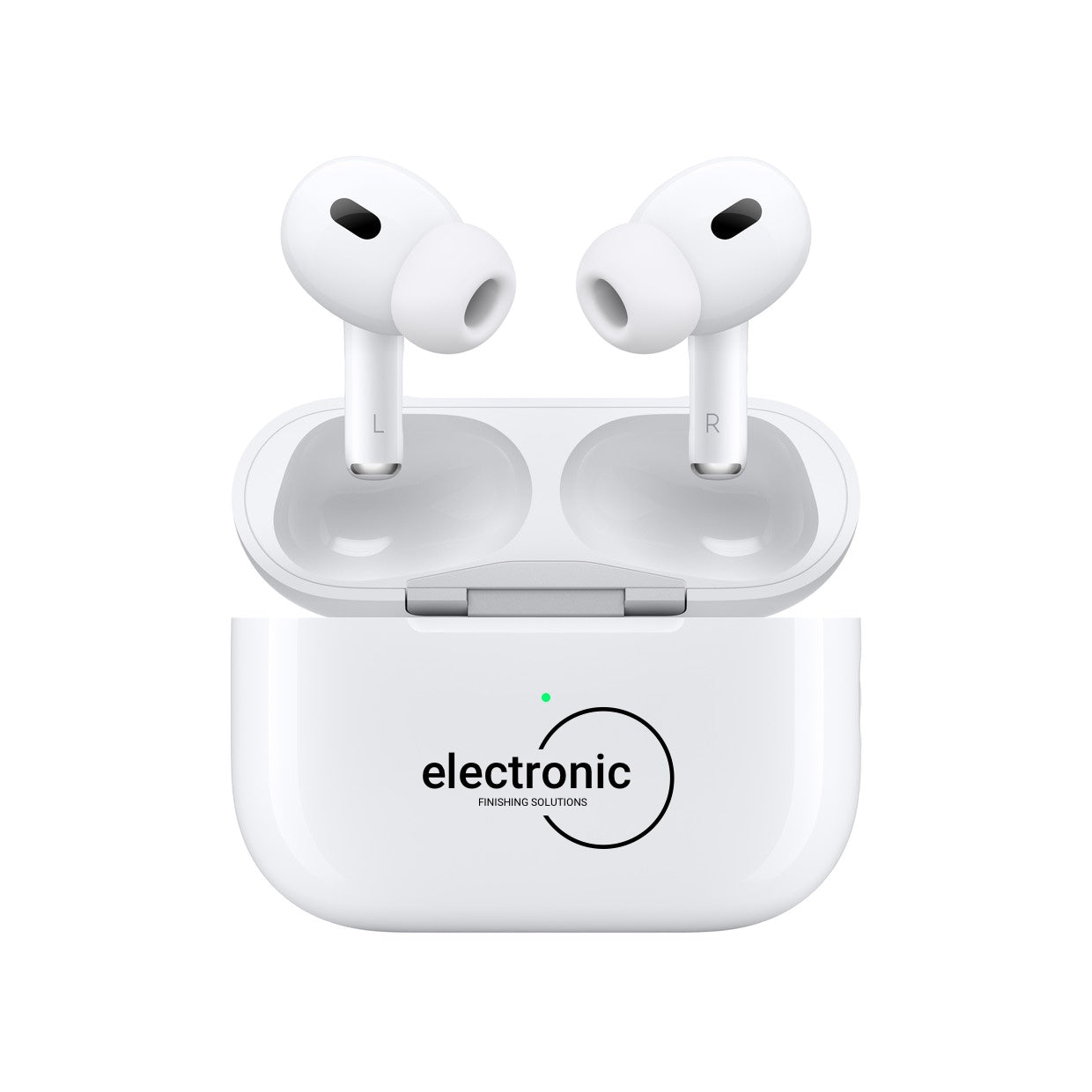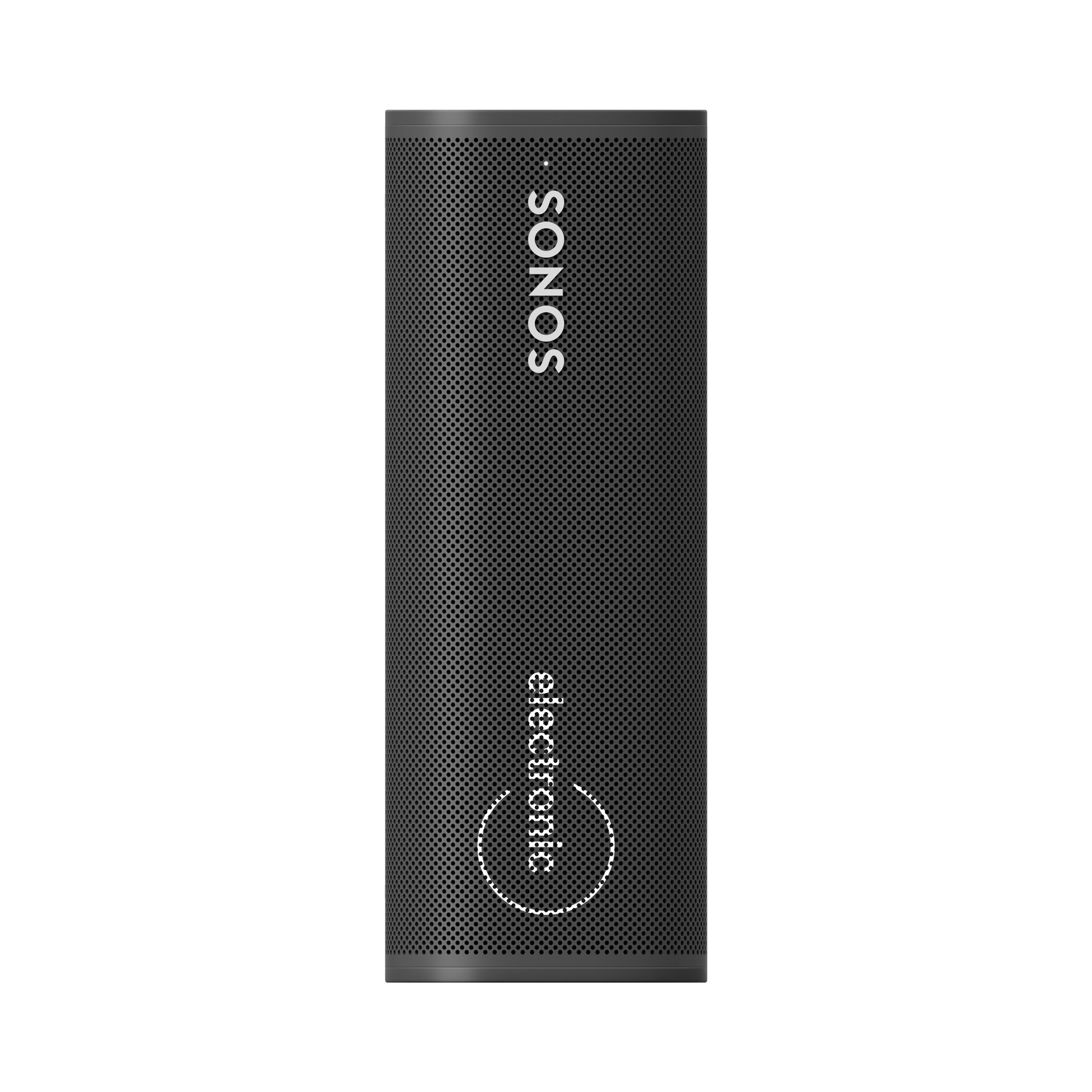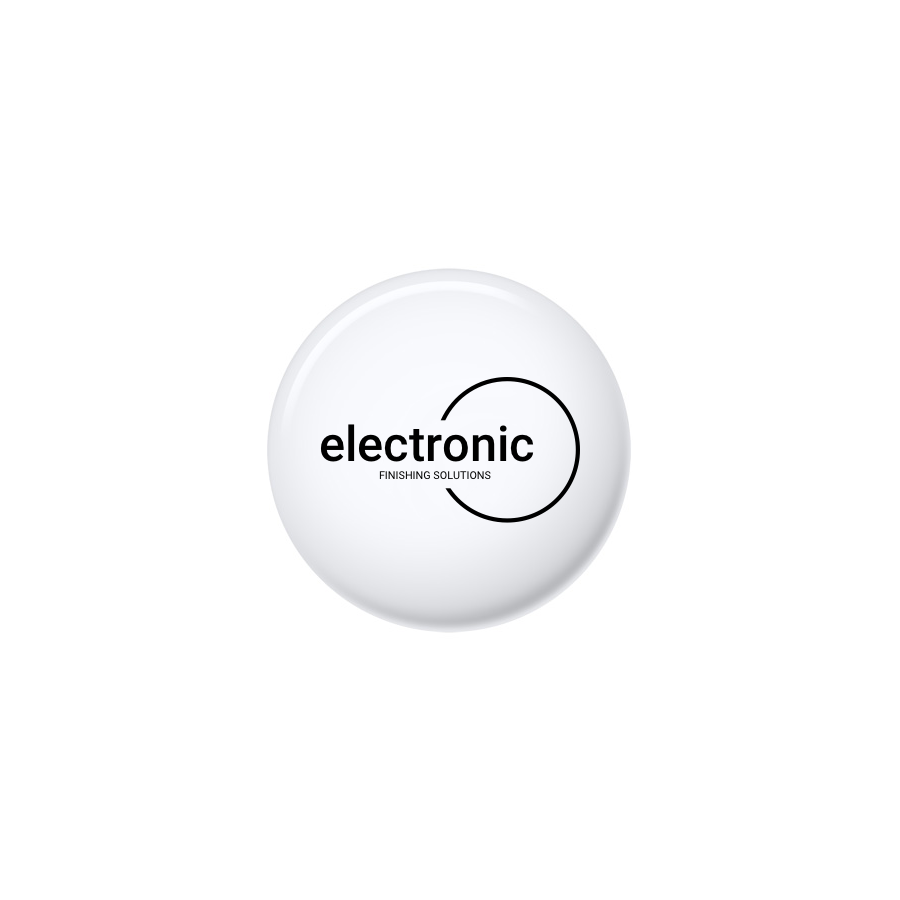Building Your Brand Awareness Measurement Foundation

A strong foundation in brand awareness measurement is critical for business growth. This means understanding not only what metrics to track, but also why. Many companies get caught up in tracking vanity metrics like social media followers. While these numbers might look impressive, they don't always correlate with actual business outcomes.
Instead, focus on building a measurement program that offers actionable insights. These insights should directly inform your strategic decisions. Ask yourself: Are you trying to boost sales, drive more traffic to your website, or perhaps build stronger customer loyalty?
Your chosen metrics should align perfectly with these core objectives.
Defining Your Measurement Objectives
The first step is to clearly define your objectives. What are you hoping to accomplish by measuring brand awareness? This clarity will guide your metric selection. It ensures you're focusing on data that truly matters, rather than getting lost in a sea of irrelevant numbers.
Having well-defined objectives also streamlines the analysis process. It makes it easier to spot key trends and patterns that can be used to refine your marketing strategies. Each metric you track should have a clear purpose and contribute to a broader understanding of your brand’s overall performance.
Selecting the Right Metrics
Once you’ve defined your objectives, you can start selecting the right Key Performance Indicators (KPIs). Your KPIs should adhere to the SMART criteria: Specific, Measurable, Achievable, Relevant, and Time-bound. This framework ensures your metrics are both relevant and provide a clear picture of your progress.
For example, if your goal is to increase website traffic, some relevant KPIs might include direct traffic, branded search volume, and referral traffic from social media platforms. But tracking these numbers alone isn't enough.
Measuring brand awareness is crucial for marketers. It tells you how well your brand is recognized by your target audience. A 2022 Nielsen Annual Marketing Report highlighted that building brand awareness remained a top priority for global marketers. This underscores the importance of quantifying brand recognition and perception. Metrics like branded search volume and social media engagement offer valuable data on the effectiveness of your brand awareness campaigns.
Establishing Baselines and Benchmarks
Finally, establish baselines and benchmarks. A baseline represents your current starting point. Benchmarks, on the other hand, represent the targets you're aiming for.
These reference points give context to your data and help you understand if your efforts are making a real difference. Think of it like measuring a child's growth. You record their initial height (baseline) and compare it to growth charts (benchmarks). This shows you how they're developing.
Similarly, tracking your brand awareness metrics against your baselines and industry benchmarks gives you valuable insights into your brand’s growth. This data allows you to adjust your strategies and stay on track toward achieving your objectives.
Metrics That Actually Move the Business Needle
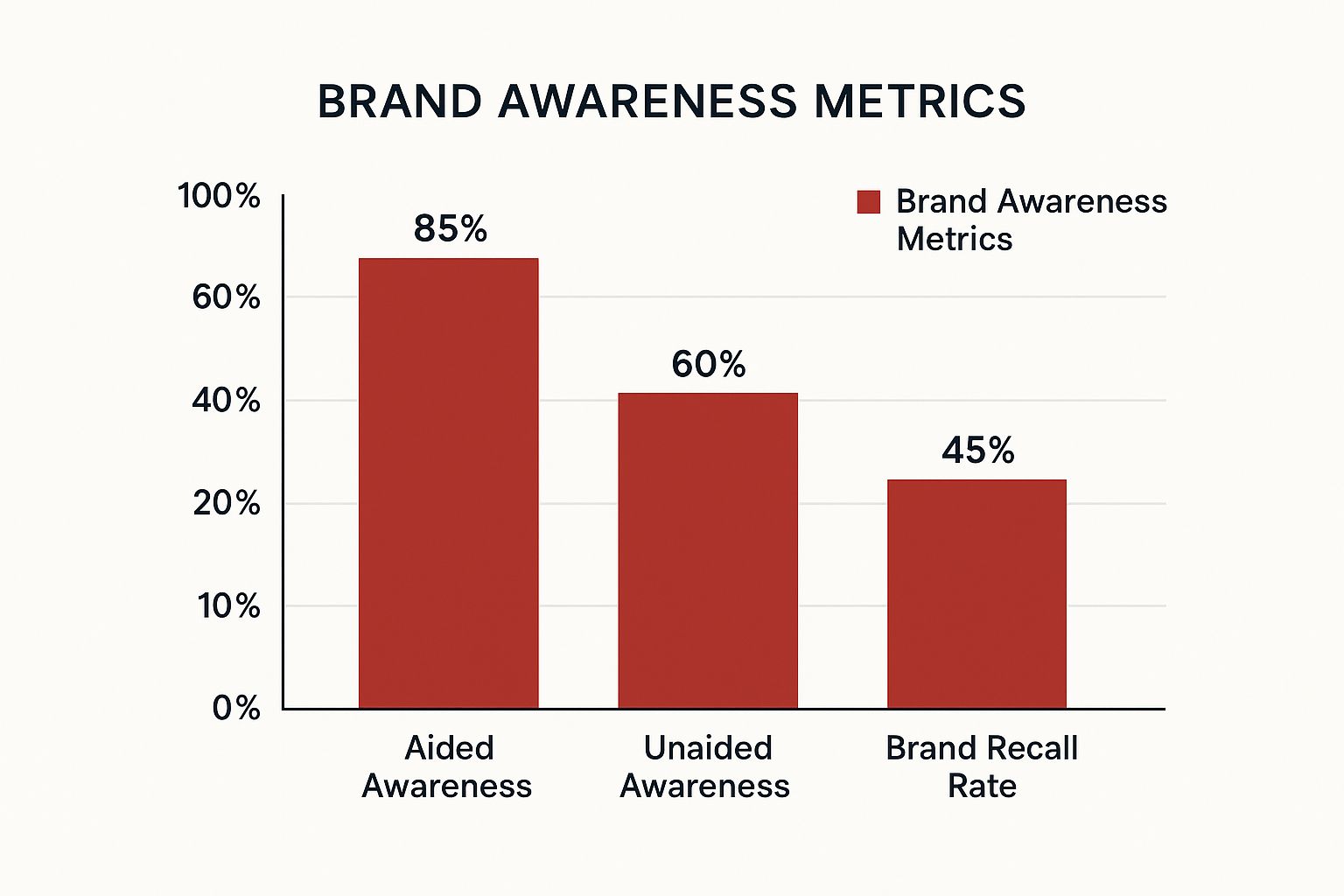
The infographic above illustrates aided awareness, unaided awareness, and brand recall rate, giving a quick overview of how well a target audience recognizes a brand. The data shows aided awareness typically ranking highest, followed by unaided awareness, then brand recall. This highlights how prompting consumers significantly influences brand recognition, while brand recall presents a more challenging, yet valuable measure of brand strength. For more practical strategies, check out this helpful guide on measuring brand awareness proven tactics.
Beyond Vanity Metrics: Measuring What Matters
You're probably tracking impressions, likes, and shares. But what do these vanity metrics truly reveal about your brand's health? While they provide a snapshot of audience engagement, they don't always correlate with real business results. This is why focusing on specific, actionable metrics is crucial for brand awareness measurement.
Branded search volume, for instance, is a key indicator of brand recognition and purchase intent. This metric tracks how often people search for your brand by name, revealing not only awareness but active interest. Website traffic, especially direct traffic, signals strong brand recall. When consumers type your website address directly into their browser, they’re demonstrating clear brand recall, bypassing search engines altogether.
The Power of Qualitative Data
Quantitative data like website traffic and search volume offers valuable insights. However, don't underestimate the power of qualitative data. Understanding consumer sentiment, their brand perceptions, and overall brand experience provides a deeper dimension to your measurement strategy. This involves gathering feedback through surveys, reviews, and social listening.
Branded search volume tracks how many people actively search for a brand by name, demonstrating both brand recognition and purchase intent. Social media metrics like engagement rate and audience growth rate are also essential indicators of brand awareness, reflecting audience interaction and brand memorability. Tracking these metrics helps marketers refine strategies to enhance brand visibility and appeal. For additional perspectives, consider learning more about brand awareness measurement.
The following table summarizes key brand awareness metrics and their impact. It compares measurement methods, tracking frequency, and the insights they provide.
Core Brand Awareness Metrics Comparison
| Metric | Measurement Method | Tracking Frequency | Primary Insight | Business Impact |
|---|---|---|---|---|
| Branded Search Volume | Keyword tracking tools (e.g., SEMrush) | Monthly/Weekly | Brand interest and purchase intent | Increased website traffic, potential leads |
| Website Traffic | Website analytics (e.g., Google Analytics) | Daily/Weekly | Brand recall and engagement | Higher conversion rates, improved brand loyalty |
| Social Media Engagement | Social media analytics platforms | Daily/Weekly | Audience sentiment and brand perception | Enhanced brand reputation, increased social reach |
| Customer Surveys | Survey platforms | Quarterly/Annually | Brand perception and customer satisfaction | Improved customer experience, stronger brand advocacy |
Combining quantitative and qualitative data creates a comprehensive view of your brand awareness. This approach allows you to identify strengths, weaknesses, and areas for improvement in your brand-building strategies. By connecting these metrics to tangible business outcomes, such as sales and customer acquisition, you ensure your brand awareness measurement drives growth and success.
Mastering Social Media Brand Awareness Intelligence
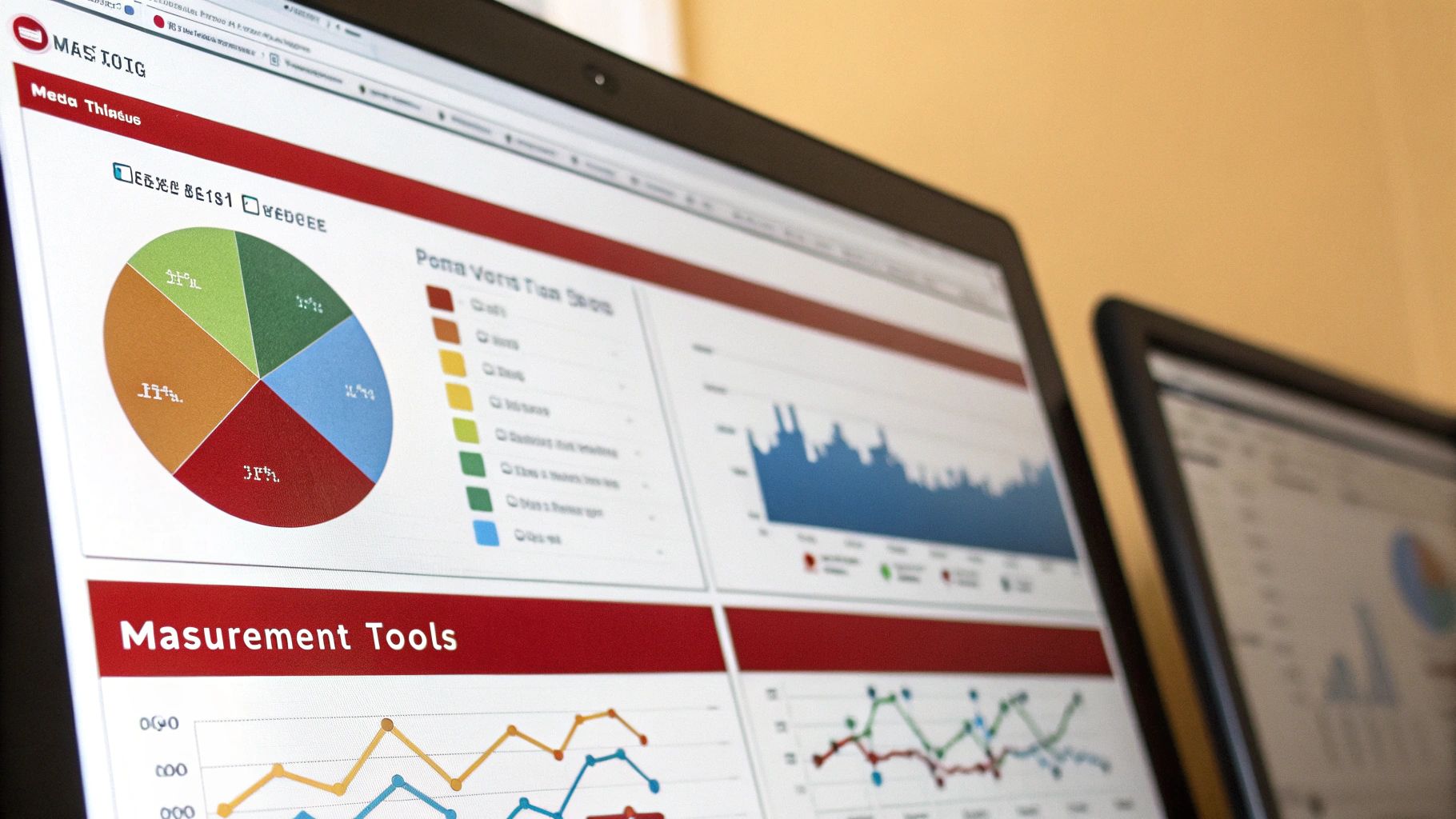
Social media platforms are overflowing with data. However, many marketers find it challenging to extract meaningful insights that truly contribute to brand awareness measurement. Tracking vanity metrics like follower counts and likes simply isn't enough. It's about understanding the deeper conversations happening online.
To accurately gauge brand awareness, identifying the right metrics is essential. For a deeper dive into key social media engagement metrics, check out this helpful resource: social media engagement metrics.
Platform-Specific Strategies for Brand Awareness
Each social media platform has its own distinct culture and style of communication. What resonates on LinkedIn might fall flat on TikTok. Your brand awareness measurement strategies need to be platform-specific. This requires analyzing metrics unique to each platform and understanding how conversations surrounding your brand differ across these channels.
- LinkedIn: Prioritize engagement with professional content, industry discussions, and thought leadership.
- Instagram: Focus on metrics related to visual content, such as likes, comments, shares, reach, and impressions.
- TikTok: Keep a close eye on video views, shares, and how viral brand-related hashtags and challenges become.
- Emerging Channels: Be adaptable and adjust your measurement strategies as new platforms appear.
This flexibility ensures a consistent and strong online presence for your brand.
Sentiment Analysis: Measuring Brand Perception
Sentiment analysis digs deeper than simply categorizing mentions as positive or negative. It explores the nuances of online conversations, revealing the why behind people's reactions. Sophisticated sentiment analysis tools can pick up on subtle shifts in brand perception.
This offers early warnings about potential reputation risks and emerging opportunities, allowing for proactive intervention and strategic adjustments.
Key social media KPIs like reach, impressions, and engagement rate are vital for evaluating brand visibility and interaction. For example, a rise in social media reach and engagement suggests a successful brand awareness campaign. Tools like Social Analytics and Mention help marketers track these metrics, offering valuable insights into brand mentions, sentiment, and audience engagement. Learn more about measuring brand awareness: brand awareness measurement. Also, you might find this resource valuable: How to master top brand awareness strategies.
Social Listening for Strategic Intelligence
Social listening is more than just monitoring brand mentions; it's about actively participating in relevant conversations and gathering data to inform broader business strategies.
Social listening can uncover valuable information such as:
- Emerging trends and unmet customer needs
- Potential product development opportunities
- Competitor activity and industry insights
- Early warning signs of potential crises
By transforming social data into strategic intelligence, brands can proactively adapt to market changes, refine products and services, and mitigate potential reputational damage. This proactive approach helps solidify brand presence and fosters resilience.
Decoding Website Analytics for Brand Insights
Your website acts as a central hub, reflecting the effectiveness of your brand-building activities. Deciphering website analytics offers crucial insights into brand awareness measurement. It's about more than just looking at overall traffic.
Identifying Brand-Driven Traffic
Distinguishing between general interest and genuine brand recall is key. A sudden spike in direct traffic—visitors typing your website address directly into their browser—often signals a successful awareness campaign.
This means your brand is top-of-mind. High traffic from generic search terms, however, might indicate broader product category interest, not necessarily in your brand specifically.
Segmentation for Deeper Analysis
Advanced segmentation techniques can isolate brand-driven behavior. This involves filtering website traffic based on source, demographics, and even user behavior.
Segmenting users arriving via branded search terms versus generic ones reveals valuable insights. This clarifies which channels are most effective at driving targeted traffic, highlighting areas for optimization.
For social media, monitoring channel metrics is important for understanding brand awareness trends. Learn more about these metrics in this article about YouTube channel metrics. Additionally, web analytics tools like Google Analytics help track website traffic, showing if PR and social media efforts are driving visitors. This data can be used to refine marketing strategies and boost brand awareness. Direct traffic and referral traffic from social media or other sites can also indicate increased brand awareness. Explore this topic further here.
Tracking the Customer Journey
Analyzing the customer journey from initial brand exposure to conversion enhances brand awareness measurement. This involves tracking user interactions with your website, including page visits and visit duration.
This reveals how engaging your content is for brand-aware visitors. By understanding this journey, brands can identify opportunities to improve the digital experience and drive conversions. This data provides valuable feedback for optimizing content and site navigation.
Advanced Tools That Transform Brand Measurement

Modern brand awareness measurement has evolved beyond simple surveys and social media checks. It now requires tools that can effectively capture the complexities of the customer journey across various touchpoints. This means understanding which tools offer a genuine return on investment for measuring brand awareness, and which ones offer expensive features without providing valuable insights. For a more detailed guide on measuring brand awareness, check out this helpful resource: How to Measure Brand Awareness Effectively.
Harnessing the Power of AI
Artificial intelligence (AI) is reshaping how we approach brand tracking. Predictive sentiment analysis now goes beyond simply categorizing mentions as positive or negative. AI can now delve into the nuances of language, offering deeper insights into consumer perception.
This ability allows brands to identify emerging trends and potential risks to their reputation. AI-powered tools can also automate the generation of insights, allowing marketers to focus more on strategic planning. This automation reduces the need for manual reporting, improving the speed and accuracy of brand awareness measurement. AI can automatically analyze data from various sources like social media, website analytics, and even customer service interactions to identify key themes and trends related to brand perception.
Integrating Data Sources for a Unified View
Relying on a single platform rarely provides a complete picture of brand performance. Integrating multiple data sources is essential for a comprehensive understanding of brand awareness. Strategic data integration methods create unified dashboards that offer a more coherent narrative.
These dashboards combine data from various sources, including social media listening tools like Buffer, website analytics platforms like Google Analytics, and CRM systems like Salesforce, to provide a holistic view of brand performance. This integrated approach allows marketers to connect brand awareness metrics to key business outcomes, such as website traffic, leads, and sales.
To help illustrate the landscape of available tools, we've compiled a comparison table:
Brand Awareness Measurement Tools Overview Comprehensive comparison of popular brand tracking tools including features, pricing, and best use cases
| Tool Name | Key Features | Pricing Tier | Best For | Integration Options |
|---|---|---|---|---|
| Brandwatch | Social listening, media monitoring, image recognition | Starts at $89/month | Agencies, large enterprises | CRM, marketing automation |
| Talkwalker | Social media analytics, consumer intelligence, crisis management | Contact for pricing | Large enterprises, global brands | Social media platforms, CRM |
| Mention | Real-time monitoring, competitor analysis, social media management | Starts at $29/month | Small to medium businesses, startups | Social media platforms, analytics tools |
This table provides a quick overview of some popular brand awareness measurement tools, highlighting their key features, pricing, and ideal use cases. Choosing the right tool depends on your specific needs and budget.
Cost-Benefit Analysis for Tool Selection
It's crucial to remember that not all tools are created equal, and the right investment depends on various factors. Different business sizes and levels of brand measurement maturity will require different tools. A startup might focus on affordable social listening tools, while a larger enterprise might choose more comprehensive brand tracking platforms.
An honest cost-benefit analysis is crucial for maximizing ROI. Consider not just the initial cost of the tool but also the time and resources required for implementation, training, and ongoing maintenance. This careful evaluation ensures that the tools chosen align with the organization's budget and available resources.
Implementation Strategies for Maximum Value
Simply purchasing a tool is not enough. Effective implementation is key to realizing the full potential of these tools. This includes developing clear measurement goals, defining key metrics, and establishing baselines for tracking progress.
Additionally, ongoing monitoring and optimization are essential. Regularly review the data from these tools and adjust your measurement strategy as needed. This ensures the tools remain relevant and continue to deliver valuable insights that contribute to your brand building initiatives.
Creating Sustainable Long-Term Measurement Systems
Building a successful brand awareness measurement program requires more than just tracking metrics for individual campaigns. It demands a long-term vision, adaptable frameworks, and a deep understanding of how your brand evolves within a dynamic market. This means establishing systems that can provide valuable insights now and in the future.
Balancing Real-Time Monitoring and Historical Trend Analysis
Effective brand awareness measurement involves finding a balance. Real-time monitoring, using tools like Google Analytics, allows you to quickly identify tactical opportunities and address immediate challenges. For example, a sudden surge in negative social media sentiment might require immediate action to mitigate a potential PR crisis.
However, real-time data alone can be misleading. Historical trend analysis provides crucial perspective. By comparing current performance to past trends, you can accurately assess the long-term impact of your brand-building efforts. This historical context is essential for making informed strategic decisions.
Measurement Calendars for Data Continuity
Creating a measurement calendar is vital for maintaining data continuity and aligning your brand awareness measurement with overall business cycles. You might be interested in learning more about brand visibility: How to master brand visibility. This calendar should outline the specific metrics you'll track, the frequency of measurement, and the tools you'll use.
Furthermore, align your measurement calendar with key events like product launches and marketing campaigns. This allows you to track the impact of these initiatives on brand awareness and ensures you’re capturing the most relevant data.
Adapting to Change Without Losing Historical Comparability
As your brand grows and expands into new markets or launches new products, your brand awareness measurement approach must adapt. However, these changes shouldn't sacrifice historical comparability. Maintain consistent core metrics even as you add new ones specific to new markets or products. This consistent tracking provides a valuable benchmark.
For example, while you might introduce new social media metrics for a campaign targeting a specific region, continue tracking your overall brand mentions and sentiment across all platforms. This provides a holistic view and allows you to see how the campaign impacts your overall brand awareness. You can learn more about measuring brand awareness here.
Future-Proofing Your Measurement System
The marketing world is constantly evolving. New platforms emerge, algorithms change, and consumer behavior shifts. To ensure your brand awareness measurement system remains effective, it needs to be adaptable and future-proof. This might include exploring new technologies and integrating new data sources.
Moreover, regularly review your measurement framework and adjust your Key Performance Indicators (KPIs) as needed. A static system quickly becomes outdated. By staying agile and adaptable, your brand awareness measurement will remain a valuable source of strategic insights, enabling you to navigate future changes effectively.
Key Takeaways
This guide offers a practical roadmap for achieving brand awareness measurement success. We'll explore proven strategies that deliver measurable results, providing actionable frameworks, highlighting potential pitfalls, and establishing success benchmarks tailored to various business stages.
Prioritizing the Right Metrics
Begin by identifying the metrics most relevant to your specific business objectives. Avoid getting sidetracked by vanity metrics. Instead, concentrate on those that truly reflect brand recognition and indicate purchase intent. For example, branded search volume demonstrates active customer interest, while direct website traffic suggests strong brand recall. Enhance this data with qualitative feedback from customer surveys and social listening to understand why customers perceive your brand in a certain way.
-
Focus on Actionable Metrics: Track key indicators such as branded search volume, website traffic (particularly direct traffic), social media engagement, and customer survey responses.
-
Gather Qualitative Insights: Don't just rely on numbers. Gain a deeper understanding of customer sentiment and brand perception through surveys, reviews, and social listening.
Leveraging Social Media Intelligence
Social media platforms offer invaluable resources for measuring brand awareness. Look beyond simple follower counts and likes. Implement platform-specific strategies, acknowledging that brand conversations evolve differently across various channels. Employ sentiment analysis techniques to capture nuanced shifts in brand perception. Translate this social data into strategic intelligence to guide product development, crisis management, and other key initiatives.
-
Platform-Specific Strategies: Tailor your approach for each platform (LinkedIn, Instagram, TikTok, etc.).
-
Sentiment Analysis: Decipher the reasons behind customer reactions, not just the reactions themselves.
-
Social Listening: Proactively identify emerging trends and potential risks.
Utilizing Website Analytics
Your website data provides a wealth of information regarding brand performance. Discern traffic patterns that genuinely represent brand recall as opposed to general interest. Utilize segmentation techniques to isolate brand-driven behavior from other marketing influences. Track the customer journey from initial brand exposure to conversion, revealing how effectively your website content engages brand-aware visitors.
-
Identify Brand-Driven Traffic: Distinguish between general website traffic and traffic specifically attributed to brand awareness.
-
Segmentation: Analyze traffic based on source, demographics, and user behavior to gain deeper insights.
-
Track Customer Journey: Examine user interactions on your website to understand the customer experience for visitors who are already familiar with your brand.
Building a Sustainable Measurement System
An effective brand awareness measurement system must be sustainable and adaptable. Balance real-time monitoring with historical trend analysis to gain a comprehensive understanding of your brand's trajectory. Establish measurement calendars aligned with business cycles and campaign launches. Ensure your methods can adapt as you expand into new markets or introduce new products, all while maintaining historical data consistency.
-
Balance Real-Time and Historical Data: Combine current data with past performance trends to gain a well-rounded perspective.
-
Measurement Calendars: Develop a structured approach for consistently tracking key metrics.
-
Adapt to Change: Ensure your measurement strategy can evolve alongside your business growth, preserving data consistency throughout.
Elevate your brand awareness measurement and unlock its full potential. Partner with Electronic Finishing Solutions (EFS) to create custom-branded premium electronics that leave a lasting impression and drive tangible results. Visit Electronic Finishing Solutions today to discover how custom-branded electronics can enhance your marketing strategies.

